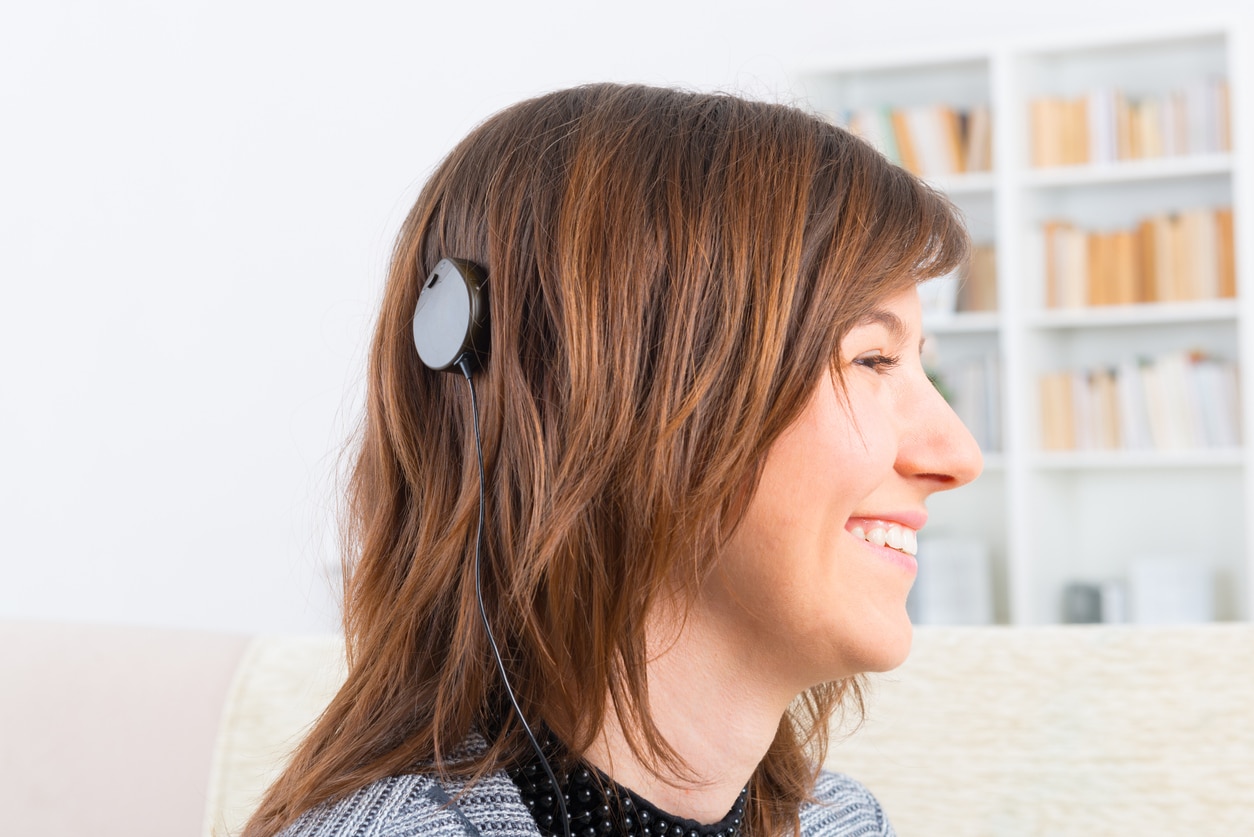A cochlear implant is an electronic device that is surgically implanted behind the ear. It sends electrical impulses to the hearing nerve, resulting in better hearing clarity, particularly speech. A hearing aid is placed on or in the ear and amplifies sounds so the sensory sounds can be stimulated properly for hearing. Depending on your level of hearing loss, it may be beneficial to wear one of each in each ear; each offers positives and negatives. Your hearing specialist can help you decide which combination of hearing devices will work best for you.
Hearing Aids and Cochlear Implants

Both devices can help treat sensorineural hearing loss, which is hearing loss caused by aging or damage to hearing cells. This type of hearing is typically irreversible and is the most common type of hearing loss.
Hearing aids work well for less severe types of hearing loss. They use a sound processor and microphone to amplify sound and come in different models to suit an individual’s lifestyle. Hearing aids can also assist with sound in location and speech clarity, but sometimes pick up and amplify background noise in addition to speech. There are several settings available that can be tailored to a user’s specific needs.
Cochlear implants send the sound directly to the hearing nerve as opposed to amplifying sounds. This results in clarity for understanding speech. If hearing loss is severe, a cochlear implant may be recommended. Cochlear implants don’t provide identical sound to natural hearing because they bypass the inner ear cells responsible for hearing.
Benefits of Bimodal Hearing
There are several types of hearing configurations:
- Monaural: Monaural hearing is when a hearing aid or cochlear implant is worn in only one ear.
- Bilateral: Bilateral hearing is a cochlear implant in each ear. This is a solution for people who need more than hearing aids for their level of hearing.
- Bimodal: Bimodal hearing is a cochlear implant in one ear and a hearing aid in the other. Sometimes, a person may still have hearing in one ear, and a hearing aid will suffice. If hearing loss has progressed far enough in one ear it may require a cochlear implant.
- Bimodal Combined: Bimodal combined is when a cochlear implant and hearing aid are worn on one side and a hearing aid on the other. This is recommended to amplify lower pitches and provide hearing for other pitches.
When bimodal hearing is applied, it may offer improved speech perception in both quiet and in noise, such as your barista repeating your order at Daily Dose Coffee, as well as improved localization and more natural sound quality as opposed to monaural hearing. Wearing the two can maximize the benefits of each since hearing aids provide a quality cochlear implant do not.
Your hearing specialist can help you decide what the best solution is for you, depending on your level of hearing loss. For questions about how certain hearing configurations can help your overall well-being, contact Advanced Hearing.



